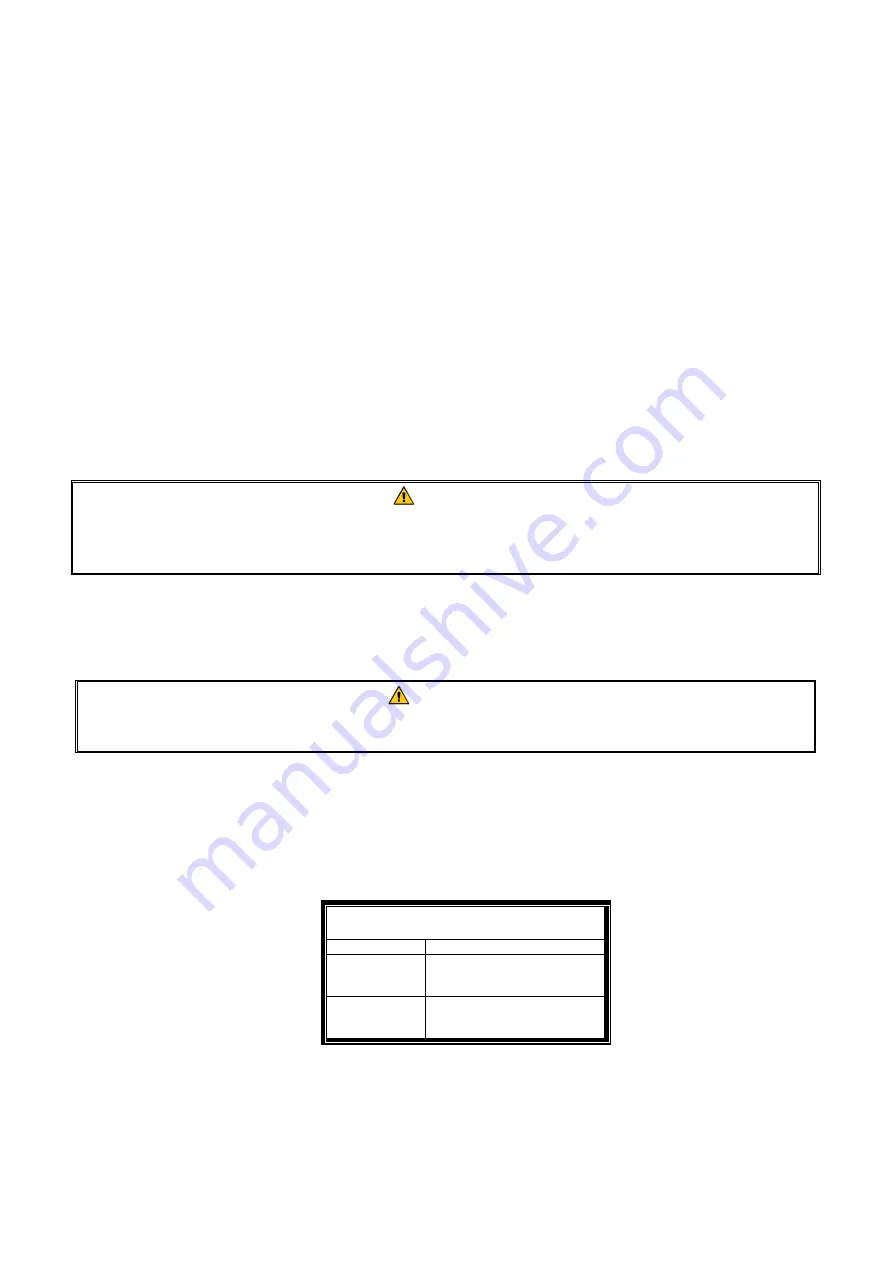
2-6
Before connecting new pipe to your unit, the pipe must be thoroughly blown out to remove any
foreign particles. If these foreign particles get into the burner and controls, they will cause improper
and sometimes dangerous operation.
1.
Connect the quick-disconnect hose to the cooker quick-disconnect fitting at the rear of the cook-
er and to the building gas line.
NOTE:
Some cookers are configured for a rigid connection to the gas supply line. These units
must be connected to the gas supply line at the rear of the unit using fittings approved for that
purpose by the appropriate regulatory agency of the county in which the appliance is installed.
NOTE:
When using thread compound, use very small amounts on male threads only. Use a
pipe thread compound that is not affected by the chemical action of LP gases (i.e. propane, G31)
(Loctite™ PST56765 Sealant is one such compound).
DO NOT
apply compound to the first two
threads. This will ensure that the burner orifices and control valve do not become clogged.
2.
Open the gas supply to the cooker and check all piping, fittings, and gas connections for leaks.
A soap solution should be used for this purpose.
DANGER
Never use matches, candles, or any other ignition source to check for leaks. If gas
odors are detected, shut off the gas supply to the cooker at the main shut-off valve
and contact the local gas company or an authorized service agency for service.
3.
Close the cooker drain valve and fill the cookpot with water and detergent. Light the cooker and
perform the boil-out procedures that are described in the “Lighting Instructions” and “Boiling
Out the Cookpot” topics found in Chapter 3 of this manual.
WARNING
“Dry-firing” this equipment will cause damage to the cookpot. Always ensure that
water is in the cookpot before firing your unit.
4.
It is recommended that the burner gas pressure be checked at this time by the local gas company
or an authorized service agent. Refer to “Check Burner Pressure” in Chapter 4 of this manual for
the proper procedure. The accompanying tables list the burner gas pressures for the various gas
types that can be used with this equipment.
Standard for Burner Gas Pressure
Gas Pressure
Natural
3" WC
0.87 kPa
8.718 mbar
Propane
8.25" WC
2.05 kPa
20.55 mbar
Total Restaurant Supply - https://totalsupply1.com - Toll Free 1-800-944-9304 - Local 507-288-9454
2940 Hwy 14 W, Rochester, MN 55901














































